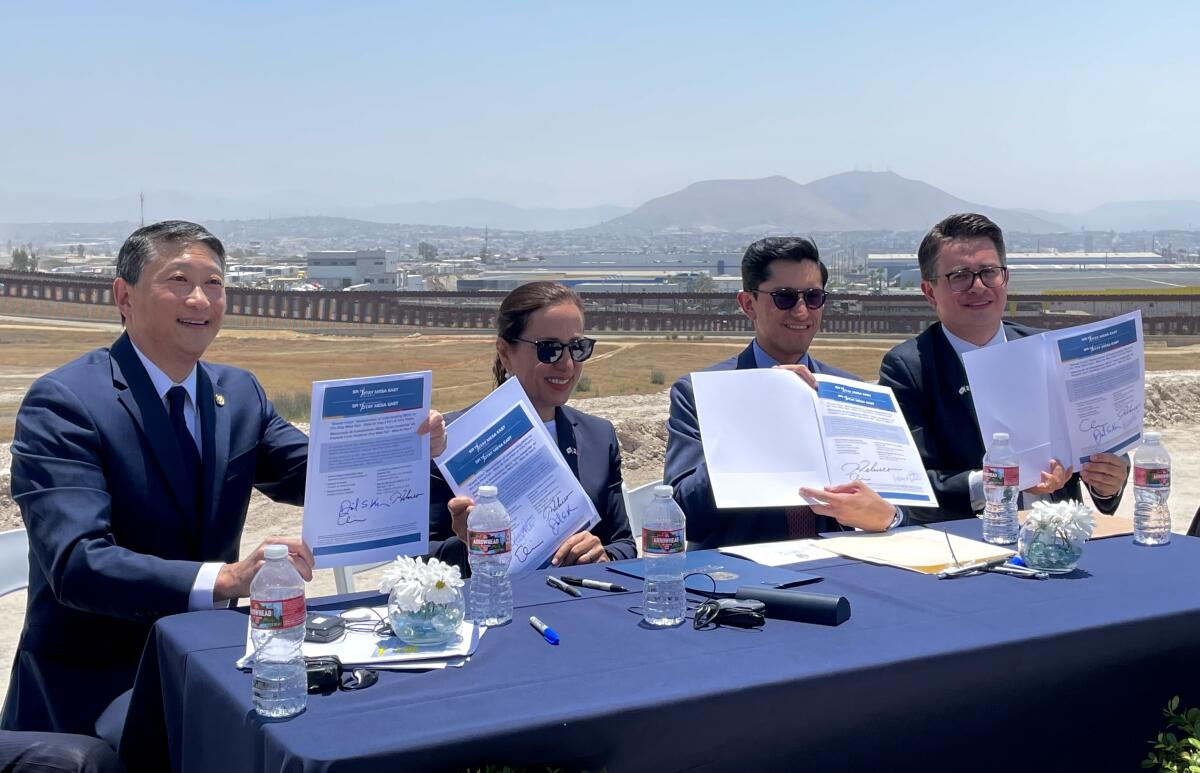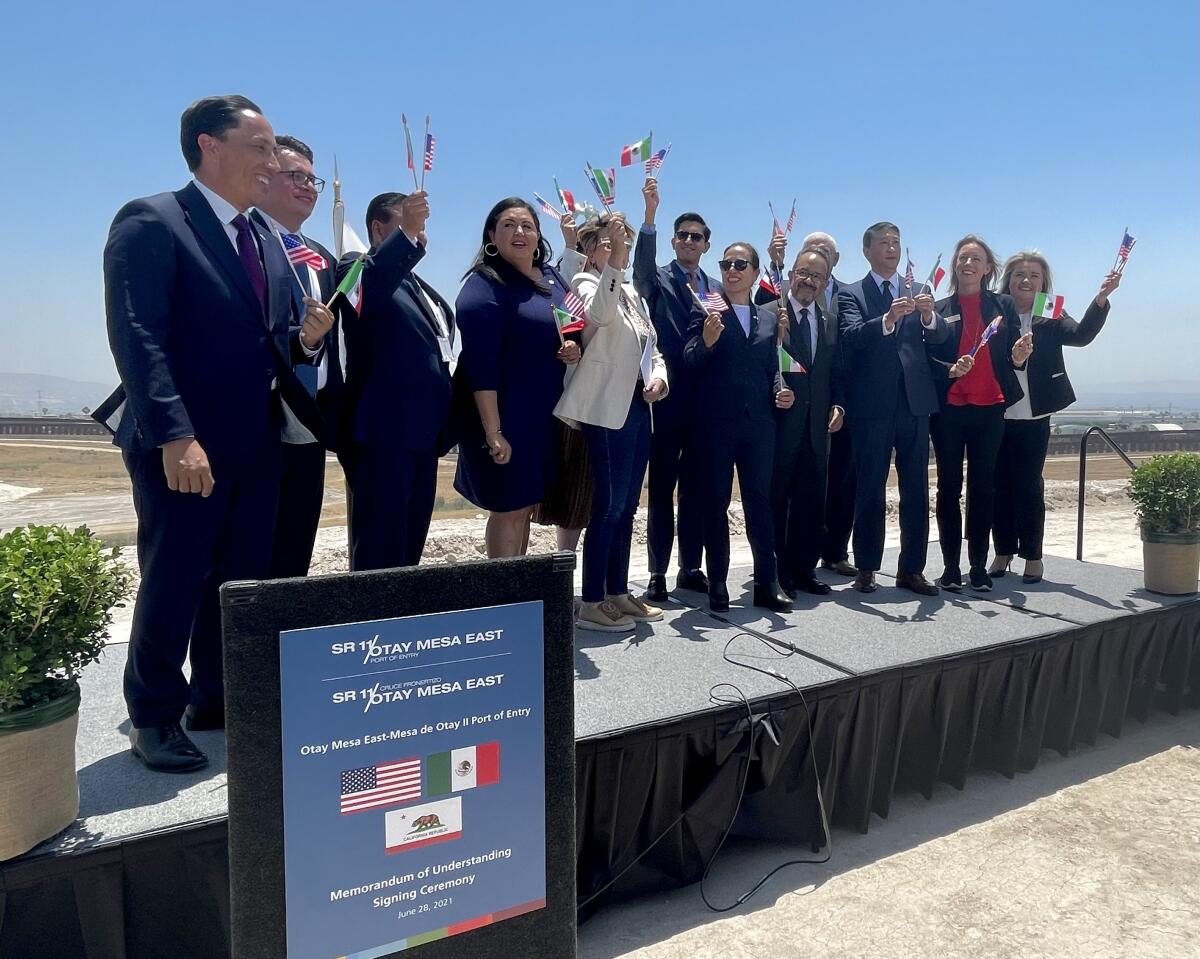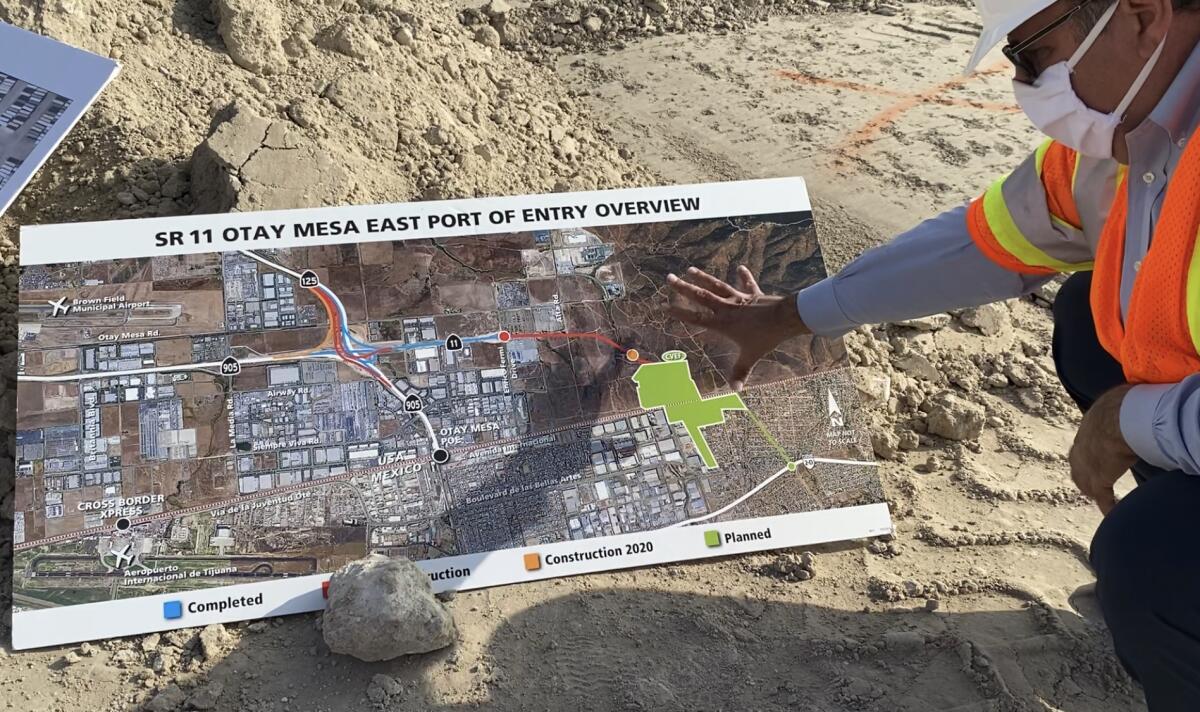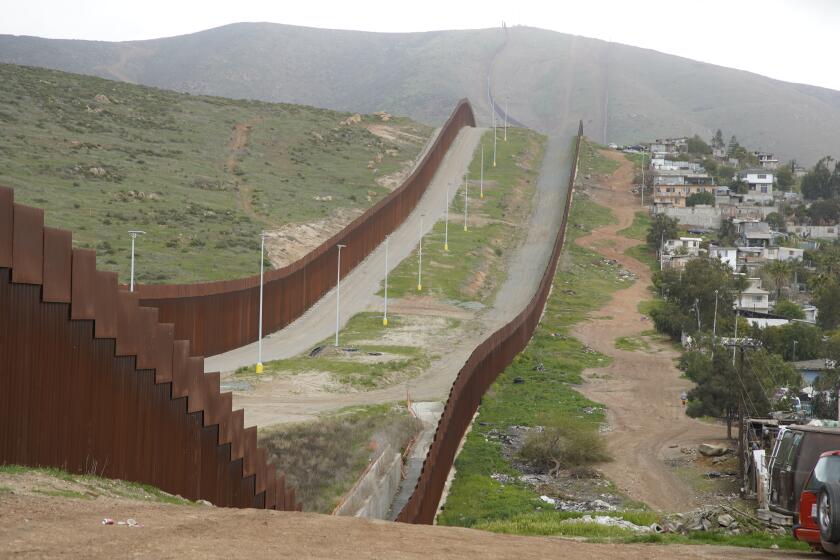California and Mexico sign agreement to open new border crossing by late 2024

- Share via
OTAY MESA — The governments of California and Mexico signed an agreement Monday stating their commitment to work together to open new border crossing at Otay Mesa by late 2024.
With the new gate, the third in the San Diego region, officials aim to reduce long port-of-entry wait times. The goal with the added crossing is a wait time of no more than 20 minutes.
Currently, passenger vehicles and commercial trucks crossing the border between Tijuana and San Diego may endure tedious waits — harming business, as well as air quality as they idle in line — officials said.
“This new port of entry will not only spur economic activity, but it will also improve the quality of life for the millions of Californians and Mexicans who frequently cross one of the busiest borders in the world,” said California Lt. Gov. Eleni Kounalakis.
She called the agreement “a great example of California’s leadership in combating climate change. The project will reduce greenhouse gas emissions and improve mobility in the region.”
Otay Mesa East, also known as the Otay II project, is expected to provide an economic boost of $1.8 billion annually, officials said.
With the signing of the memorandum of understanding, California and Mexico have agreed to adhere to construction timelines, to quickly resolve any policy issues, and to establish a framework to share toll revenues for project funding.
The project is set to be built in two years, starting in September 2022
“We know what it takes to get it done. We have certain milestones to meet, and now we have this document that memorializes our commitment to the project,” said California Secretary of Transportation David S. Kim after the signing ceremony Monday at the construction site in Otay Mesa.
On the California side, the $1-billion project has already secured $565 million in local, state and federal funding. The remainder is expected to be financed mostly through toll revenue.
On Mexico’s side, a first-phase investment of more than $186 million is under consideration to cover construction work and access roads, according to Roberto Velasco, director of North America with the Mexican Ministry of Foreign Affairs.
Last year, Mexican President Andrés Manuel López Obrador included the Otay II project within an infrastructure plan aiming to reactivate the economy.
Velasco emphasized that this project was a symbol of a strong binational relationship. “We believe in building bridges, not in building walls, and this is important for us in that sense,” he said.
“This is the future of the U.S.-Mexico relationship that we want — a future where we are more connected, and we allow for the many different possibilities that life in the border offers to both of our countries.”

Initially, Otay Mesa East will have five lanes for vehicles and five more for commercial trucks, with the option for these to be interchangeable depending on the time and demand, explained María Rodríguez-Molina, project manager with the San Diego Assn. of Governments.
Tolls will not be collected at the U.S. Customs and Border Protection inspection point. They will be collected electronically or at toll booths that will be placed within the U.S. along State Route 11. Studies are still underway to determine the cost.
Toll collection will be for both northbound and southbound traffic. The revenue will be divided between the U.S. and Mexico, added Mario Orso, project director with Caltrans.

On the U.S. side, the project started eight years ago with the construction of State Route 11. Construction of the new port of entry is now underway on a 100-acre area a few miles east of the current Otay Mesa border crossing.
In Tijuana, construction is expected to begin next year to meet the agreed-upon timeframe.
More to Read
Sign up for Essential California
The most important California stories and recommendations in your inbox every morning.
You may occasionally receive promotional content from the Los Angeles Times.











